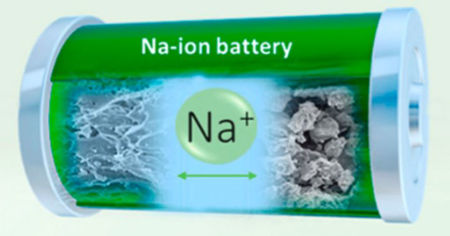While Lithium-ion batteries are the current preferred energy storage technology, university researchers have joined forces to test sodium-ion as a potential competitor, Electronics Point reports.
The emergence of sodium-ion batteries (SIBS), also known by their chemical formula Na-ion, “hold great potential as a possible ‘successor’ to LIBs: they’re low-cost, environmentally-friendly, and have diverse key performance indicators to satisfy a myriad of different applications”.
While SIBs have the potential to challenge the dominant position of the lithium-ion battery, the researchers note there are a number of challenges to address, including “the formation of salt crystals, which accumulate within the structure of SIBs and eventually ruin them”.
Some of the positives of sodium-ion batteries include:
To test the potential, “a team of Na-ion technology expert scientists at the University of Warwick, England, together with colleagues from prominent institutions in Germany, France, Norway, and Spain, have come together to assess the current status of Na-ion technology.”

A graphic of a Na-ion (sodium-ion) battery. The middle of the graphic is superimposed with two microscopy photographs to represent the battery’s chemical makeup. Image Credit: the University of Warwick via ScienceDirect.
The researchers outlined their findings in their paper, ‘Challenges of today for Na-based batteries of the future: from materials to cell metrics’, published in the Journal of Power Sources on the 18th of September 2020.
Na-based batteries come in different forms:
The sodium-ion battery market is expected to grow at a compound annual growth rate of 5% and it is stationary energy storage applications where Na-ion batteries may hold the most promise.

A collection of graphics used to represent various sodium-based battery chemistries. Pictured at the left of this image are some suggested applications of sodium-ion batteries, including the powering of electric vehicles. Image Credit: the University of Warwick.
Layered oxides, polyanionic (from the word ‘polyanion’, meaning a molecule or chemical complex that has negative charges at several sites) compounds, and Prussian Blue analogues were said to be the most promising materials for positive electrodes by the researchers, in addition to titanium-based oxides, carbon, and alloying compounds for insertion-based negative electrodes.
“In this field, sodium-ion batteries have the potential to dominate the future market, representing the most promising system to fill the gap between energy production and utilisation by securing energy supply,” Ivana Hasa, co-author of the research paper stated, identifying high-power applications in electric vehicles as a potential niche application for SIBs. She also pointed out that more work is needed “to raise the high-voltage, capacity, lifetime, and efficiency performance of sodium-ion devices”.
This is great news for the energy storage systems market, where a successor to Li-ion technology is desperately needed to reduce costs and improve cycle life.
contact us:
 EN
EN
 English
English
 Chinese
Chinese
 Italiano
Italiano
 Portuguese
Portuguese
 Deutschland
Deutschland
 French
French
 Russian
Russian
 Japanese
Japanese
 Turkish
Turkish
 Korean
Korean
 Spanish
Spanish
 my account & orders
my account & orders

